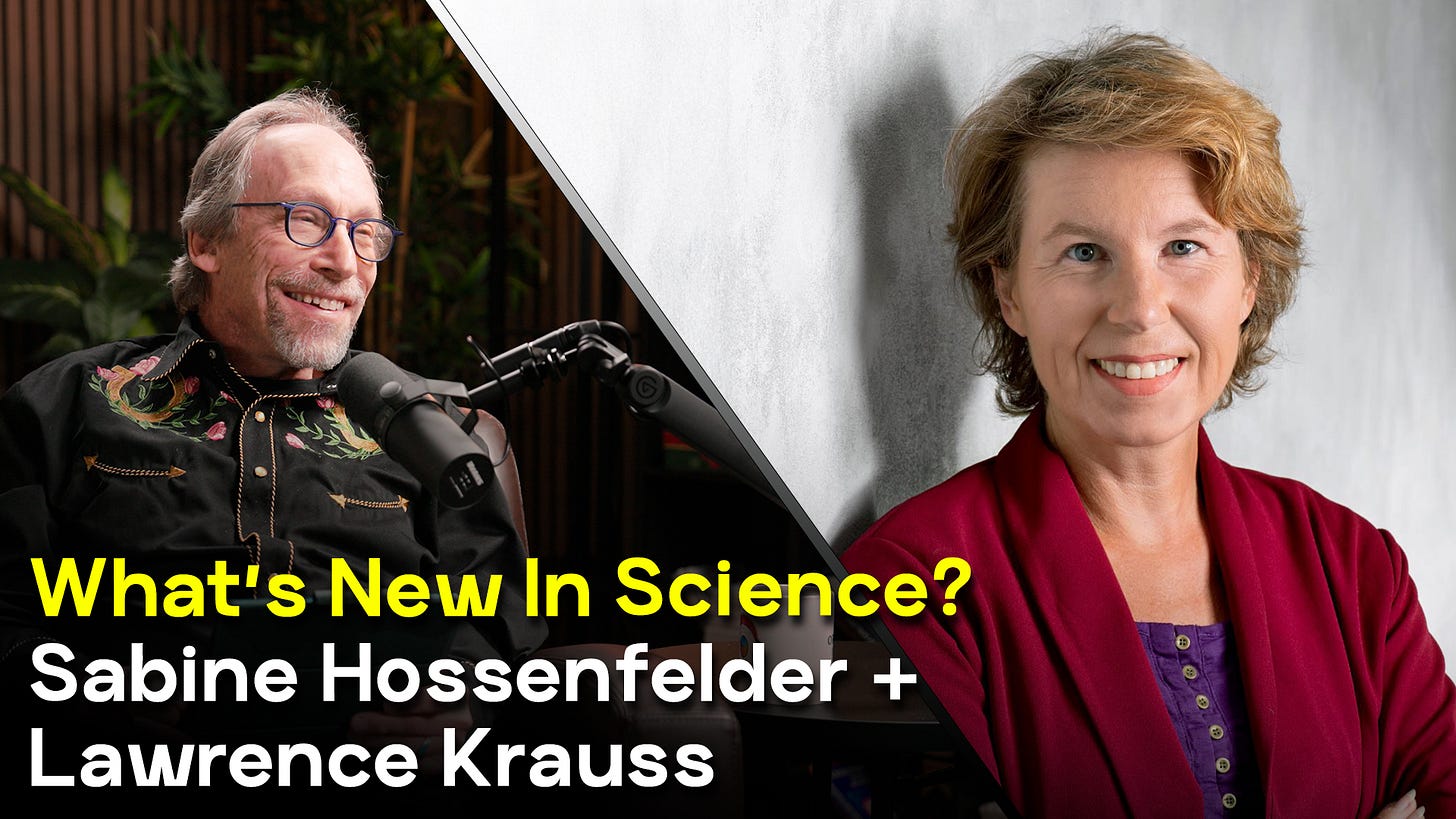(Ad-free Video) What's New in Science With Sabine and Lawrence
In the fifth episode of What’s New in Science, Sabine Hossenfelder and I discuss...
I’m excited to announce the fifth episode of our new series, What’s New in Science, co-hosted by Sabine Hossenfelder. Once again, Sabine and I each brought three recent science stories to the table, and we took turns introducing them before diving into thoughtful discussions. It’s a format that continues to spark engaging exchanges, and based on the feedback we’ve received, it’s resonating well with listeners.
In this month’s episode Sabine first explored the possibility that huge terrestrial accessible reservoirs of hydrogen may exist that could provide the basis for a viable hydrogen fuel economy. Then we turned to the results from the wonderful new Vera C. Rubin Telescope in Chile, and what that telescope could do for our evolving picture of the cosmos. After that Sabine introduced a discussion of a scientific paper I wrote with colleagues on implications of mathematical incompleteness theorems for the possible existence of a physical Theory of Everything. Then on to the newly released results from a muon g-2 experiment at Fermilab, which after almost 2 decades of efforts, seems to have demonstrated that predictions from the the Standard Model of Particle Physics, alas, continue to agree with experiments, showing no signs of new physics. After that, we explored a new claim by DeepMind about the abilities of AI systems to design and test new coding algorithms, which might be used to train future systems. Besides the science-fiction sounding nature of this, it could also help reduce the amount of energy needed to build and train LLMs. Finally, returning to my own interest in new results related to the cosmic origin of life, we discussed anew result showing why polycyclic hydrocarbons, which one might expect would be destroyed by radiation in space, seem to survive. This could be important for understanding how organic seeds for life managed to survive long enough to arrive on the early Earth.
As always, this ad-free video is available to paid subscribers only. Your subscriptions support the non-profit Origins Project Foundation, which produces the podcast. The audio version is available free on the Critical Mass site and on all podcast sites, and the video version will be available on the Origins Project YouTube channel as well.
Keep reading with a 7-day free trial
Subscribe to Critical Mass to keep reading this post and get 7 days of free access to the full post archives.




